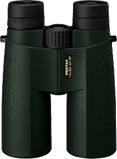Heptagonal orbweaver
(Gea heptagon)
Conservation • Description • Habitat • Ecology • Distribution • Taxonomy
Conservation Status |
|||
| IUCN Red List | not listed |
||
| NatureServe | NNR - Unranked |
||
| Minnesota | not listed |
||
Description
Heptagonal orbweaver is a common, exotic, small, orb-weaving spider. It was probably introduced into the United States from Australia or the Pacific islands, where it is native. It now occurs in the U.S. from Maine to Florida, west to Minnesota and eastern Texas, and on the West Coast of southern California. The first sighting in Minnesota was in Wabasha on June 21, 2019.
Adults are active from March to November. They are found in agricultural fields, old fields, marshes, and roadside ditches. Webs are built in vegetation near the ground.
Females are ⅛″ to ¼″ (4.1 to 6.0 mm) in length.
The front part of the body (cephalothorax) is much smaller than the abdomen. It is yellowish brown sometimes with yellow spots.
There are eight eyes arranged in two parallel rows of four eyes each, and in three groups, four in the middle and two on each side. The rear row is curved forward and the front row is straight or slightly curved backward. All of the eyes are small. The median ocular area (MOA), the area defined by the middle group of four eyes, is square or trapezoidal. On each side the lateral eyes are widely separated from the middle (median) eyes and are almost touching each other.
The abdomen has six bumps which make it appear to have seven sides (heptagonal) when viewed from above. This is the feature that gives the species its common name and its species epithet. The coloration of the upper surface is variable. It is usually dark brown or yellowish brown, there is usually a dark triangular area near the rear, and there are sometimes white markings. The background color of the abdomen is sometimes mostly white or pale with a mesh-like network of thin brown lines.
The legs are yellowish brown with dark bands.
Males are slightly smaller, 3⁄32″ to 3⁄16″ (2.6 to 5.3 mm) in length. The carapace and legs are yellowish brown. The abdomen is smaller and paler, and the dark mark near the rear is distinct.
Size
Female Body Length: ⅛″ to ¼″ (4.1 to 6.0 mm)
Male Body Length: 3⁄32″ to 3⁄16″ (2.6 to 5.3 mm)
Web
The female constructs a dense, vertical web of sticky threads close to the ground between herbaceous plants. The web is up to 3″ (13 cm) in diameter and consists of 25 to 33 radii and numerous spirals.
Similar Species
Habitat
Agricultural fields, old fields, marshes, and roadside ditches
Ecology
Season
March to November
Behavior
Life Cycle
Food
Small invertebrates
Distribution |
||
|
Sources |
|
| 11/10/2025 | ||
Occurrence |
||
Common in eastern U.S. Uncommon but spreading in Minnesota. |
||
Taxonomy
Class
Order
Suborder
Araneomorphae (Typical Spiders)
Infraorder
Entelegynae
Superfamily
Araneoidea (orbweavers and allies)
Family
Subfamily
Argiopinae
Genus
Gea
Subordinate Taxa
Synonyms
Epeira heptagon
Gea heptagon ssp. nigra
Gea praecincta
Gea praedicta
Common Names
heptagonal orbweaver
March’s seven-sided orb weaver
Glossary
Carapace
The hard, upper (dorsal), shell-like covering (exoskeleton) of the body or at least the thorax of many arthropods and of turtles and tortoises. On crustaceans, it covers the cephalothorax. On spiders, the top of the cephalothorax made from a series of fused sclerites.
Cephalothorax
The front part of the body of various arthropods, composed of the head region and the thoracic area fused together. Eyes, legs, and antennae are attached to this part.
Visitor Photos
Share your photo of this arachnid.
This button not working for you?
Simply email us at info@MinnesotaSeasons.com.
Attach one or more photos and, if you like, a caption.
Alfredo Colon |
||
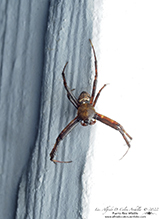 |
||
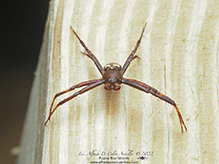 |
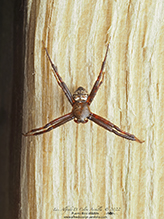 |
|
MinnesotaSeasons.com Photos
|

Slideshows
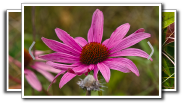
Visitor Videos
Share your video of this arachnid.
This button not working for you?
Simply email us at info@MinnesotaSeasons.com.
Attach a video, a YouTube link, or a cloud storage link.
Other Videos
Gea Heptagon Spider
IloveSPIDERZ
Gea Heptagon ATTACKS Deer Fly (Chrysops sp.)
IloveSPIDERZ




